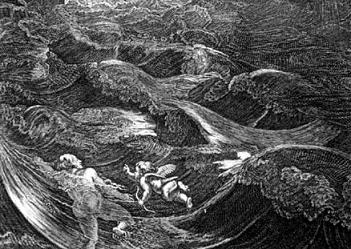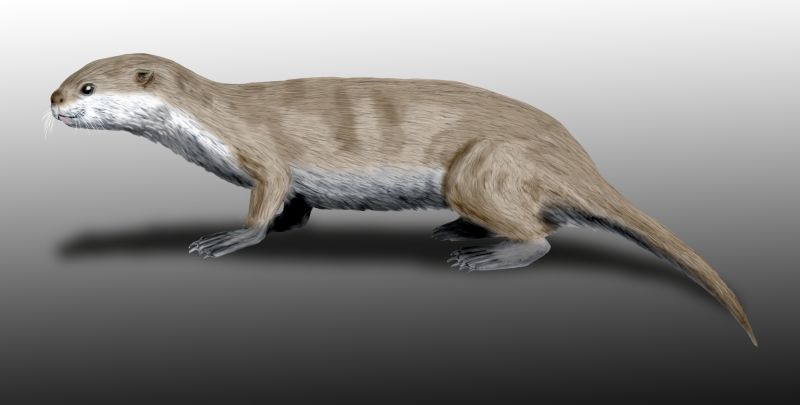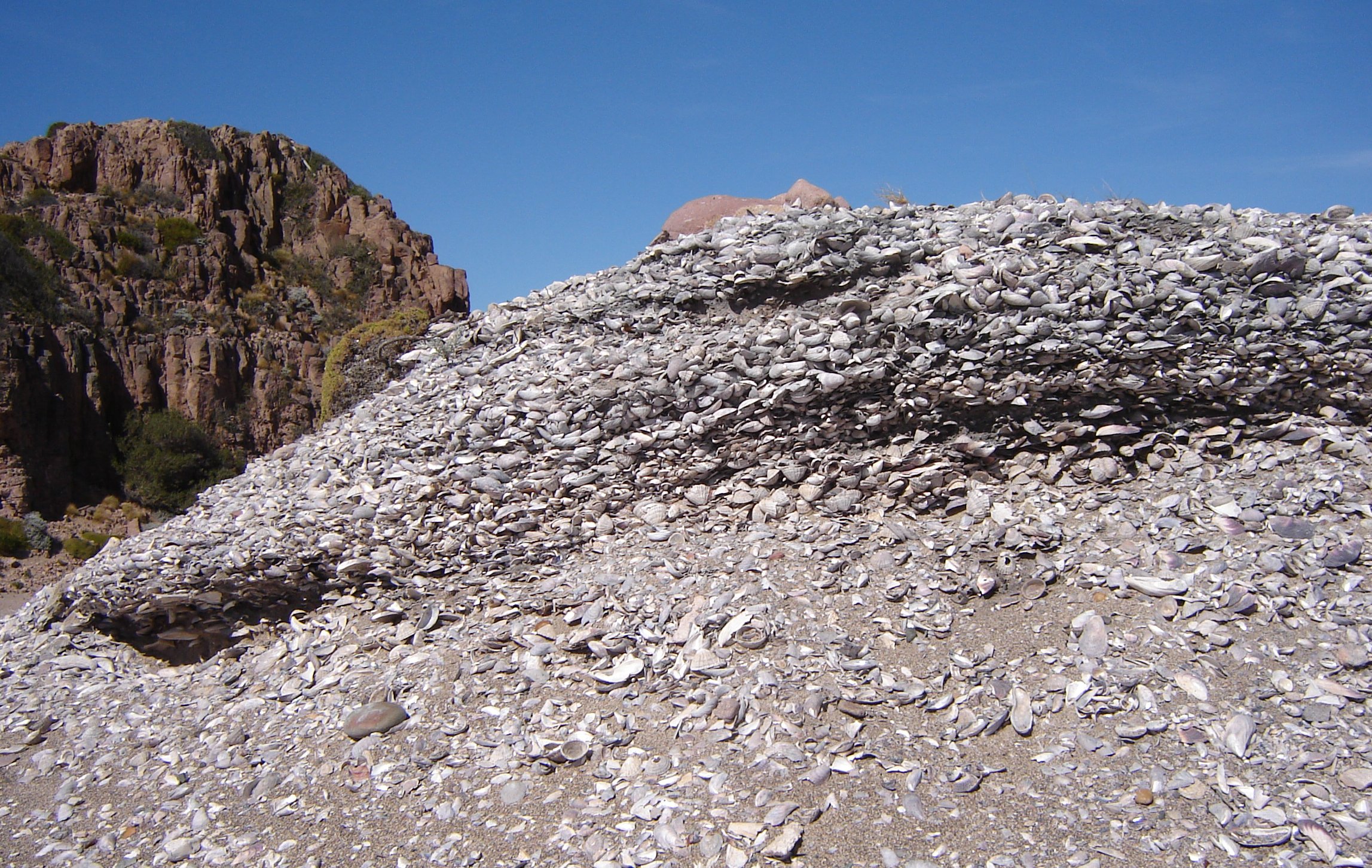|
Beginish Island
Beginish () is an island in Valentia Harbour, in south west Kerry Kerry, Ireland. Geography Dominating the northern skyline is Doulus Head and Killelan mountain, with Valentia island to the south and Ballycarbery to the east. The north west of the island faces out to the Atlantic ocean and Dingle bay. Surrounding Beginish are other small islands, including Lamb Island to the north and Church Island to the east. Church Island is notable for having the remains of a monastic settlement with an oratory and hut, holy well and shrine. On the northern edge of the island is a series of columnar basalt cliffs which have a hexagonal shape formed in a similar manner to the famous Giant's Causeway. There are a small number of holiday homes on the island which are used seasonally. The island is used for sheep farming and some small scale forestry, and by tourists in the summer months who use the island's beaches for recreational purposes. History The island has numerous ar ... [...More Info...] [...Related Items...] OR: [Wikipedia] [Google] [Baidu] |
Beginish House
The Beginish house is a stone house and National Monument associated with the Viking period, located in County Kerry, Ireland. Location The Beginish house is located in Canroe (''An Ceann Rua'', "the red headland"), on the eastern part of Beginish Island, an island in Valentia Harbour. History The settlement at Beginish was inhabited by Vikings between the 9th and 12th centuries AD. Description 8 stone houses were associated with field systems, 8 cairns and 15 animal shelters. A runic inscription was found used as lintel for a house, and a bone pin and comb A comb is a tool consisting of a shaft that holds a row of teeth for pulling through the hair to clean, untangle, or style it. Combs have been used since prehistoric times, having been discovered in very refined forms from settlements dating ba ... were found. References Buildings and structures in County Kerry Tourist attractions in County Kerry National monuments in County Kerry {{Ireland-struct-st ... [...More Info...] [...Related Items...] OR: [Wikipedia] [Google] [Baidu] |
Atlantic Ocean
The Atlantic Ocean is the second largest of the world's five borders of the oceans, oceanic divisions, with an area of about . It covers approximately 17% of Earth#Surface, Earth's surface and about 24% of its water surface area. During the Age of Discovery, it was known for separating the New World of the Americas (North America and South America) from the Old World of Afro-Eurasia (Africa, Asia, and Europe). Through its separation of Afro-Eurasia from the Americas, the Atlantic Ocean has played a central role in the development of human society, globalization, and the histories of many nations. While the Norse colonization of North America, Norse were the first known humans to cross the Atlantic, it was the expedition of Christopher Columbus in 1492 that proved to be the most consequential. Columbus's expedition ushered in an Age of Discovery, age of exploration and colonization of the Americas by European powers, most notably Portuguese Empire, Portugal, Spanish Empire, Sp ... [...More Info...] [...Related Items...] OR: [Wikipedia] [Google] [Baidu] |
Forestry
Forestry is the science and craft of creating, managing, planting, using, conserving and repairing forests and woodlands for associated resources for human and Natural environment, environmental benefits. Forestry is practiced in plantations and natural Stand level modelling, stands. The science of forestry has elements that belong to the biological, physical, social, political and managerial sciences. Forest management plays an essential role in the creation and modification of habitats and affects ecosystem services provisioning. Modern forestry generally embraces a broad range of concerns, in what is known as multiple-use management, including: the provision of timber, fuel wood, wildlife habitat, natural Water resources, water quality management, recreation, landscape and community protection, employment, aesthetically appealing landscapes, biodiversity management, watershed management, erosion control, and preserving forests as "Carbon dioxide sink, sinks" for Earth's atmosp ... [...More Info...] [...Related Items...] OR: [Wikipedia] [Google] [Baidu] |
Beiginis
Beginish () is one of the Blasket Islands of County Kerry, Ireland. Geography It is a low-lying island (14 metres high) with an area of 13.8 hectares in Blasket Sound, between Great Blasket Island and the mainland. It has a large colony of Arctic terns. The island is also the main birthing site for grey seals. There is at least one other island in County Kerry called Beginish: it lies at the mouth of the River Ferta about 1 km from Valentia Island. The Island lies to the north of Valentia Harbour. See also * Beginish Island Beginish () is an island in Valentia Harbour, in south west Kerry Kerry, Ireland. Geography Dominating the northern skyline is Doulus Head and Killelan mountain, with Valentia island to the south and Ballycarbery to the east. The north we ... References Blasket Islands Uninhabited islands of Ireland {{Kerry-geo-stub de:Blasket Islands ... [...More Info...] [...Related Items...] OR: [Wikipedia] [Google] [Baidu] |
Swimming (sport)
Swimming is an individual or team Racing, racing sport that requires the use of one's entire body to move through water. The sport takes place in Swimming pool, pools or open water (e.g., in a sea or lake). Competitive swimming is one of the most popular Olympic sports, with varied distance events in Butterfly stroke, butterfly, backstroke, breaststroke, Freestyle swimming, freestyle, and individual medley. In addition to these individual events, four swimmers can take part in either a freestyle or medley Relay race, relay. A medley relay consists of four swimmers who will each swim a different stroke, ordered as backstroke, breaststroke, butterfly and freestyle. Swimming each stroke requires a set of specific techniques; in competition, there are distinct regulations concerning the acceptable form for each individual stroke. There are also regulations on what types of swimsuits, caps, jewelry and injury tape that are allowed at competitions. There are many health benefits to ... [...More Info...] [...Related Items...] OR: [Wikipedia] [Google] [Baidu] |
Mick O'Connell
Michael O'Connell (born 4 January 1937) is an Irish former Gaelic footballer. Throughout his 25-year club career, he played for Young Islanders, winning seven South Kerry Championship titles during a golden age for the club; he also played for divisional side South Kerry, and experienced success in the County Championship. At inter-county level, he captained Kerry to win the 1959 All-Ireland Championship; he later claimed a further three All-Ireland medals, as well as Munster Championship and National League successes. Early life Mick O'Connell was born on Valentia Island, County Kerry in 1937. His father was a fisherman who also worked on the family's small farm on the island. From an early age, O’Connell showed his footballing talent and "inimitable signs of excellence". Playing career Club O’Connell began his club football career with neighbouring Waterville. When a football club, Young Islanders, was founded on Valentia Island, as per GAA rules O'Connell switch ... [...More Info...] [...Related Items...] OR: [Wikipedia] [Google] [Baidu] |
Marine Biology
Marine biology is the scientific study of the biology of marine life, organisms that inhabit the sea. Given that in biology many scientific classification, phyla, family (biology), families and genera have some species that live in the sea and others that live on land, marine biology classifies species based on the environment (biophysical), environment rather than on taxonomy (biology), taxonomy. A large proportion of all life, life on Earth lives in the ocean. The exact size of this "large proportion" is unknown, since many ocean species are still to be discovered. The ocean is a complex three-dimensional world, covering approximately 71% of the Earth's surface. The habitats studied in marine biology include everything from the tiny layers of surface water in which organisms and abiotic items may be trapped in surface tension between the ocean and atmosphere, to the depths of the oceanic trenches, sometimes 10,000 meters or more beneath the surface of the ocean. Specific habi ... [...More Info...] [...Related Items...] OR: [Wikipedia] [Google] [Baidu] |
Bird
Birds are a group of warm-blooded vertebrates constituting the class (biology), class Aves (), characterised by feathers, toothless beaked jaws, the Oviparity, laying of Eggshell, hard-shelled eggs, a high Metabolism, metabolic rate, a four-chambered heart, and a strong yet lightweight Bird skeleton, skeleton. Birds live worldwide and range in size from the bee hummingbird to the common ostrich. There are over 11,000 living species and they are split into 44 Order (biology), orders. More than half are passerine or "perching" birds. Birds have Bird wing, wings whose development varies according to species; the only known groups without wings are the extinct moa and elephant birds. Wings, which are modified forelimbs, gave birds the ability to fly, although further evolution has led to the Flightless bird, loss of flight in some birds, including ratites, penguins, and diverse endemism, endemic island species. The digestive and respiratory systems of birds are also uniquely a ... [...More Info...] [...Related Items...] OR: [Wikipedia] [Google] [Baidu] |
Cove
A cove is a small bay or coastal inlet. They usually have narrow, restricted entrances, are often circular or oval, and are often situated within a larger bay. Small, narrow, sheltered bays, inlets, creek (tidal), creeks, or recesses in a coast are often considered coves. Colloquially, the term can be used to describe a sheltered bay. Geomorphology describes coves as precipitously walled and rounded cirque-like openings like a valley extending into or down a mountainside, or in a hollow or nook of a cliff or steep mountainside. A cove can also refer to a corner, nook, or cranny, either in a river, road, or wall, especially where the wall meets the floor. Formation Coves are formed by differential erosion, which occurs when softer rocks are worn away faster than the harder rocks surrounding them. These rocks further erode to form a circular bay with a narrow entrance, called a ''cove''. Another way is that waves can transport rocks and sediment towards cliffs or rock faces, whic ... [...More Info...] [...Related Items...] OR: [Wikipedia] [Google] [Baidu] |
Pinniped
Pinnipeds (pronounced ), commonly known as seals, are a widely range (biology), distributed and diverse clade of carnivorous, fin-footed, semiaquatic, mostly marine mammals. They comprise the extant taxon, extant families Odobenidae (whose only living member is the walrus), Otariidae (the eared seals: sea lions and fur seals), and Phocidae (the earless seals, or true seals), with 34 extant species and more than 50 extinct species described from fossils. While seals were historically thought to have descended from two ancestral lines, molecular phylogenetics, molecular evidence supports them as a monophyletic group (descended from one ancestor). Pinnipeds belong to the suborder Caniformia of the order Carnivora; their closest living relatives are musteloids (Mustelidae, weasels, Procyonidae, raccoons, skunks and red pandas), having diverged about 50 million years ago. Seals range in size from the and Baikal seal to the and southern elephant seal. Several species exhibit ... [...More Info...] [...Related Items...] OR: [Wikipedia] [Google] [Baidu] |
Uninhabited
The list of uninhabited regions includes a number of places around the globe. The list changes year over year as human beings migrate into formerly uninhabited regions, or migrate out of formerly inhabited regions. Definitions The exact definition of what makes a place "uninhabited" is not simple. Nomadic hunter-gather and pastoral societies live in extremely low population densities and range across large territories where they camp, rather than staying in any one place year-round. During the height of settler colonialism many European governments declared huge areas of the New World and Australia to be ''Terra nullius'' (land belonging to no one), but this was done to create a legal pretext to annex them to European empires; these lands were not, and are not uninhabited. While some communities are still nomadic, there are many remote and isolated communities in the less populated parts of the world that are separated from each other by hundreds or thousands kilometres ... [...More Info...] [...Related Items...] OR: [Wikipedia] [Google] [Baidu] |
Midden
A midden is an old dump for domestic waste. It may consist of animal bones, human excrement, botanical material, mollusc shells, potsherds, lithics (especially debitage), and other artifacts and ecofacts associated with past human occupation. These features provide a useful resource for archaeologists who wish to study the diets and habits of past societies. Middens with damp, anaerobic conditions can even preserve organic remains in deposits as the debris of daily life are tossed on the pile. Each individual toss will contribute a different mix of materials depending upon the activity associated with that particular toss. During the course of deposition sedimentary material is deposited as well. Different mechanisms, from wind and water to animal digs, create a matrix which can also be analysed to provide seasonal and climatic information. In some middens individual dumps of material can be discerned and analysed. Shells A shell midden or shell mound is an arc ... [...More Info...] [...Related Items...] OR: [Wikipedia] [Google] [Baidu] |








